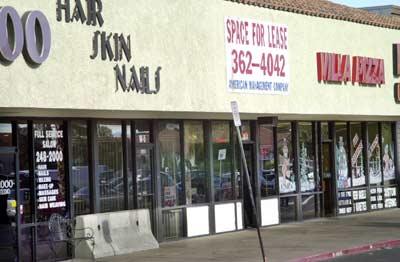Store siting decisions

In commercial district revitalization there are a couple different strategies for attracting businesses. One is to contact any and everybody. The other is to have a data-based market approach. Main Street recommends the latter, but few programs in DC have done the kinds of market studies and the creation of what is called a "positioning statement" along the lines suggested in the Main Street publications Step-by-Step Market Analysis or Marketing an Image for Main Street.
From the University of Wisconsin website:
Market Position Statement
For a recruitment program to be successful, the team must be ready to articulate a clear market position statement for the district.
A market position statement should characterize the type of retail mix, the shopping environment, and the target customer market. The statement distinguishes your district from surrounding shopping districts. Often, a community’s market position statement will serve as background for identifying the types of businesses that could be recruited.
Using the Market Analysis: Use the market position statement developed for your district using the Marketing Plan recommendations section of this guidebook
(Another good resource is the New York Main Street Resource Guide, which I will be adding to the links on the right.)
Many of the current DC Office of Planning studies have market studies as part of the project, but such studies traditionally only go about 2/3 of the way necessary to provide the kind of on-the-ground guidance that a Main Street program needs in order to be able to successfully launch a business recruitment program.
This came up in the context of the H Street Strategic Development Plan, which has a great market study produced by ERA, but in a post-plan meeting in the summer of 2002 representatives from two very prominent retail organizations said "You need a story." "What's the position of the H Street corridor?" "How do you sell it?"
I was a bit nonplussed, and I said something to the nature of "you're just looking for more money", because one of the people saying this had been on the project team. I said "why didn't you produce this as part of the SDP?"
At the Main Street conference this year, people from the University of Wisconsin Center for Community Economic Development did an excellent presentation on this, showing the additional work needed to get market studies into a "usable" form for business recruitment.
This executive summary of a market analysis for Normal, Illinois is a good example of identifying market segments and providing an easy-to-understand narrative of what they are trying to accomplish.
Anyway, in my experience there are four key decision points faced by a business proprietor involved in investing in and opening a store in the center city:
1. Whether to invest-open a store at all
2. Where to invest--city or suburbs (most retailers are focused on the suburbs)
3. If investing in the city, where to invest--NW or the other three quadrants of the city
4. Investing in your commercial district.
Even in the District of Columbia, many business proprietors only have eyes for the northwest part of the city, which has the city's best overall demographics and density. Getting people to invest in other parts of the city is still a struggle, and the people most likely to do so are those with the least experience, and therefore have a greater likelihood of failure, without the provision of some help--even they are even open to help (for more information on this broader issue, see the great article by Kennedy Smith "Main Street at 15").
The point I am making is that you need to know where in the decision chain the business proprietor is, and the process can take much longer or much shorter if you have to make a "sale" for each one of these stages.
A business proprietor who has already decided to open a store, and to invest in the District of Columbia is half sold already...

Labels: retail



0 Comments:
Post a Comment
<< Home